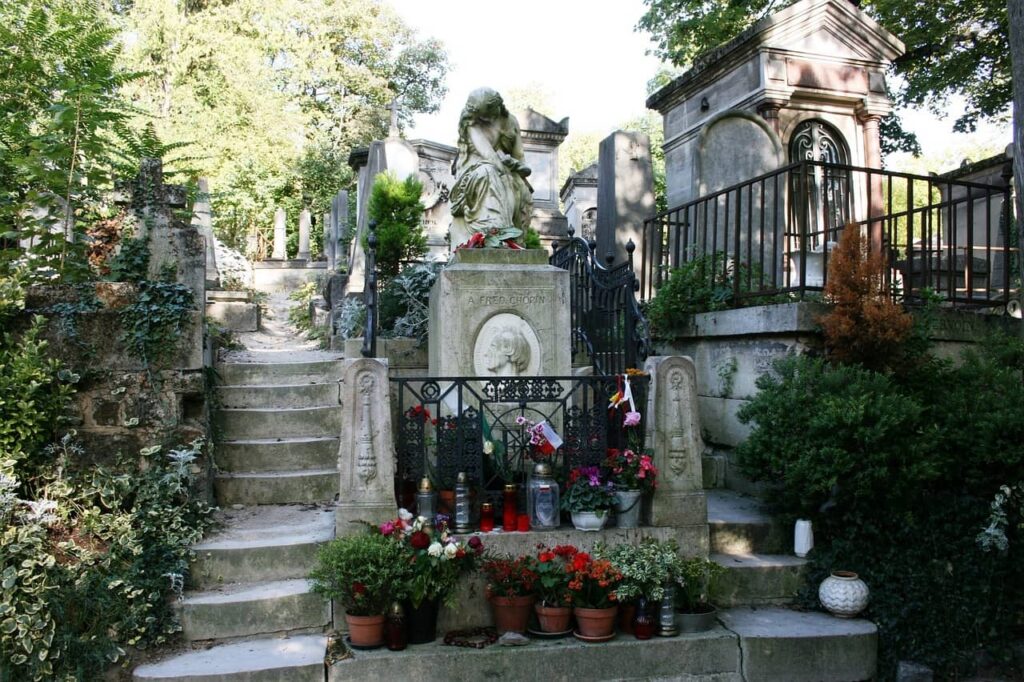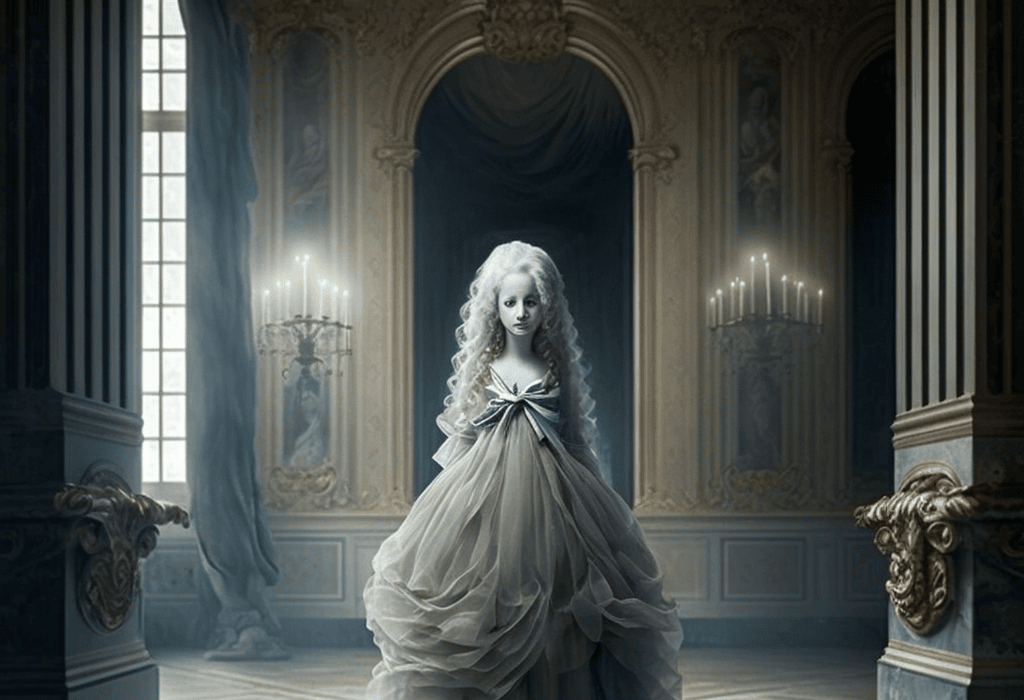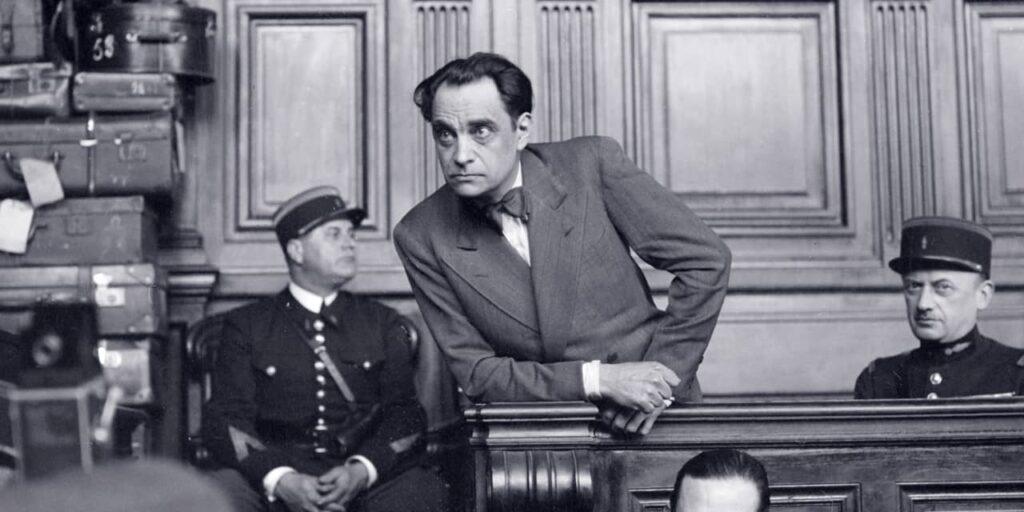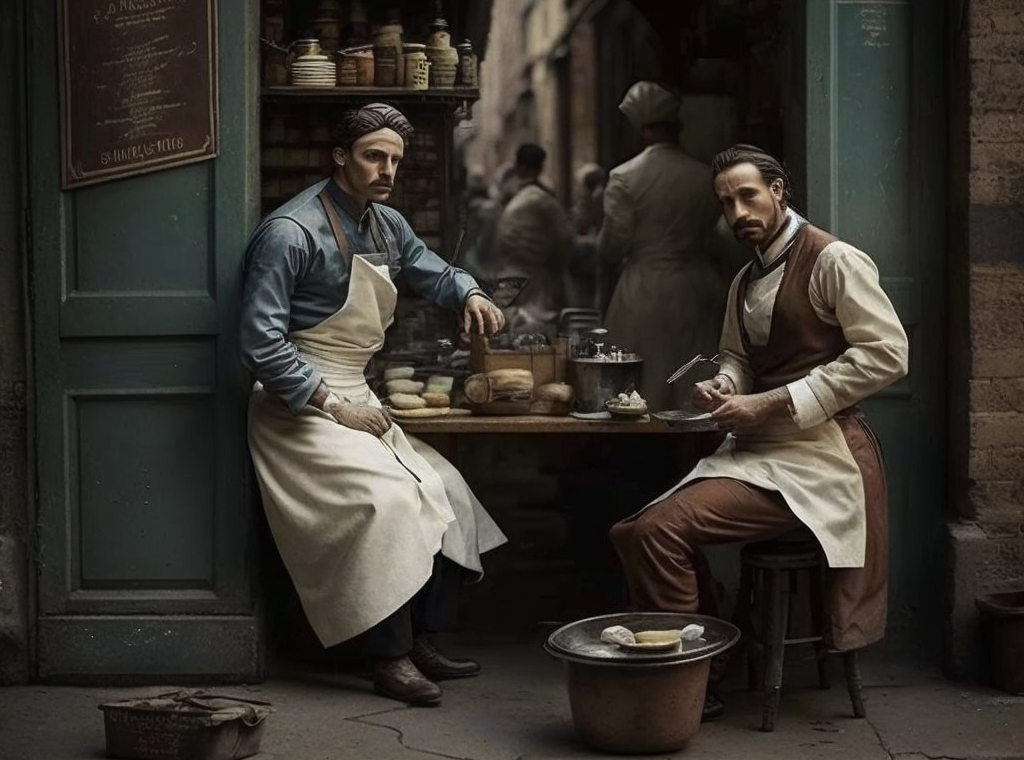Do you like creepy stories, whether they are true crime stories or legends paved with horror ? You’re in for a treat! Discover in this article 5 of the most frightening stories that took place in the capital. Real or just scary legends, we’ll let you make up your own mind 😉
Apparitions in the Père Lachaise cemetery

The Père Lachaise Cemetery in Paris is famous for its spooky and mysterious stories, including ghostly apparitions. The Lady in White, the ghost of Adolphe Thiers, and the spirits of famous personalities such as Jim Morrison, Edith Piaf, and Frederic Chopin allegedly haunt the cemetery’s alleys. Visitors report chilling atmospheres, whispers, songs and melodies coming from the graves, as well as oppressive and disturbing presences.
The legend of the Lady in White tells of a weeping woman searching for her lost lover, while the ghost of Adolphe Thiers continues to watch over the place and discuss politics. The spirits of Jim Morrison, Edith Piaf and Frederic Chopin seem to perpetuate their respective talents, with accounts of songs, echoes of voices and piano melodies rising from the cemetery. The stories surrounding these ghosts arouse the curiosity and concern of visitors, adding to the mystery and fascination surrounding Père Lachaise.
Beyond ghostly apparitions, Père Lachaise has also been the site of black masses. These occult ceremonies, often associated with the desecration of graves and satanic rites, would have taken place in the alleys of the cemetery, away from prying eyes.
There are rumors that occultists still gather regularly in the cemetery to invoke dark forces and perform forbidden rituals. Witnesses claim to have seen groups dressed in black capes, reciting incantations and desecrating graves. Others report hearing eerie screams and laughter from deep within the cemetery. So, how about a visit to the most famous Parisian cemetery ?
The ghosts of the Petit Trianon

The Petit Trianon is a small building located in the park of the Palace of Versailles, built at the request of Louis XV for his mistress, Madame de Pompadour, in the mid-18th century. Later, it was given to Marie Antoinette by Louis XVI, who used it as a private refuge.
The ghost story dates back to 1901, when two British schoolteachers, Charlotte Anne Moberly and Eleanor Jourdain, visited the Versailles estate while on vacation in France. According to their story, while walking through the park, they got lost and reached the Petit Trianon. It was there that they had a strange and confusing experience.
The two women reported seeing buildings and gardens that seemed to belong to another time, as well as people dressed in 18th century costumes. Among these spectral apparitions, they described a man wearing a tricorn hat and a face scarred by smallpox, who showed them the way. As they continued on their way, they also encountered a woman in an elegant dress and lace shawl, her face marked by a deep sadness, as if she carried the weight of history on her shoulders.
The heavy and oppressive atmosphere that surrounded them seemed to intensify as they approached the Petit Trianon. It was there that they thought they recognized the figure of Marie Antoinette herself, sitting and drawing near the castle. The teachers were struck by the melancholy that emanated from the queen, as if she were trapped in a past from which she could not escape.
Beyond these encounters, other shadows and silhouettes seemed to move around them, giving the impression of witnessing a scene from everyday life at the 18th century court. The ghosts went about their business without taking any notice of the two women, adding to the strangeness of the experience.
Shaken by this adventure, Moberly and Jourdain recorded their observations and published a book entitled “An Adventure” in 1911, under the pseudonyms of Miss Morison and Miss Lamont. The book generated a great deal of interest and was widely discussed at the time.
Doctor Petiot

Dr. Marcel Petiot is known as one of the most sordid French criminals of the 20th century. A doctor by profession, he moved to Paris between the wars to escape legal troubles. However, what he was going to do during the Nazi occupation of France was much worse.
From 1940 on, Petiot set up a scheme to take advantage of the situation. He promised desperate people safe passage out of occupied France in exchange for large sums of money. He lured them to his mansion in Paris, where he injected them with a supposed vaccine against tropical diseases before their departure. In reality, it was a cocktail of deadly drugs. Once his victims were dead, he stripped them of their valuables and disposed of their bodies by dissolving them in acid or incinerating them in his basement.
In March 1944, Petiot’s neighbors finally reported a foul odor emanating from his home. Authorities discovered the remains of several victims and immediately launched a manhunt for Petiot. He was finally arrested in May 1944 in Paris.
The trial of Marcel Petiot began in March 1946 in Paris. He was accused of 27 murders, although the actual number of his victims may be much higher. Petiot pleaded not guilty and claimed that he was a member of the French Resistance and that the people he killed were Nazi collaborators. However, the evidence was overwhelming, and he was convicted of 26 murders and sentenced to death. Dr. Marcel Petiot was executed by guillotine on May 25, 1946.
The barber and the pastry chef of the Ile de la Cité

The Île de la Cité is an emblematic place located in the heart of Paris, renowned for its rich historical and architectural past. Among the many legends that surround this area, the one of the cannibal barber and pastry chef is particularly gripping and mysterious.
This story dates back to the 14th century, when the pies of a master pastry chef on the Île de la Cité were among the most prized in the capital. Yet behind their exquisite taste was a sinister secret and a scent of crime. Reality or legend ? Let’s dive into this Parisian enigma.
Rumor has it that in 1384, a barber and a pastry chef on the rue des Marmousets formed a macabre alliance, taking advantage of their professions to commit revolting acts. The barber would slit the throats of the unfortunate students, while the pastry chef would cook them to make his delicious pâtés. The butchered bodies were transported through a secret trapdoor between the two shops, allowing the pastry chef to transform the human flesh into refined dishes. According to legend, the success of these pies had not escaped the attention of King Charles VI, who loved them without knowing their true composition.
The darkness surrounding these crimes was revealed in 1387, when the howling of a dog, witnessing the disappearance of his master, alerted the local residents and the authorities. Investigators discovered the damning evidence in the cellars of the two accomplices, putting an end to their macabre enterprise.
The shops were destroyed and their occupants condemned, leaving behind a disastrous memory. Today, the site of the old stores houses a motorcycle police garage, and a mysterious stone, supposedly the block used to butcher the victims, remains as the only remnant.
Seven centuries after this disturbing case, doubts persist as to its veracity. Is it a terrifying reality or a simple urban legend ? The truth remains elusive, but the story continues to fascinate and attract the curious in search of mystery and thrills in Paris.
The mysterious disappearances of Courtalon Street
The Halles district, the nerve center of Parisian life, is haunted by a macabre past. The rue Courtalon, although unknown and discreet, has been the scene of sinister and frightful events, which still arouse fear and curiosity today.
In the seventeenth century, the street Courtalon is plunged into terror following the sudden disappearance of 26 young people. The darkest rumors spread, evoking bloodbaths to cure a sick princess, or kidnappings perpetrated by Jews to crucify Christians. King Louis XIV himself ordered that the matter be fully investigated, causing a stir in the Parisian population.
It is then that the investigator Lecoq, supported by his son, unveils a terrifying plot. The “princess” Jabirowska, a bewitching beauty, lures young people to the rue Courtalon, where they are murdered and decapitated. Their mummified heads are sold to Germany for anatomical studies, while their bodies are sold to medical students.
The dark alleys of Courtalon Street still echo with the muffled cries of these innocent victims, while the shadow of the false princess hangs over the place. Some claim to have seen the silhouette of a grieving woman, mourning the loss of her humanity, while others whisper that she may still be alive, hidden in the city’s meanders.
The terrifying tales surrounding Courtalon Street add to the mystery and fascination that permeates the Halles district. Every step down this narrow alleyway brings back memories of a bloody past, and discerning visitors can’t help but feel a chilling atmosphere, as if the souls of the victims are still wandering these parts, seeking to unlock the buried secrets of the head-chopping princess.
Here were 5 stories and legends that we hope made you shiver with fear. There are many others, more or less legendary, that have taken place over the centuries. Thierry Paulin the old ladies' killer, the Hornec brothers, the mysterious death of the dauphin Louis XVII, the bloody trunk, or the ghosts of the Parisian subway. To discover some of them, go to our guided tours of the Paris of terror !